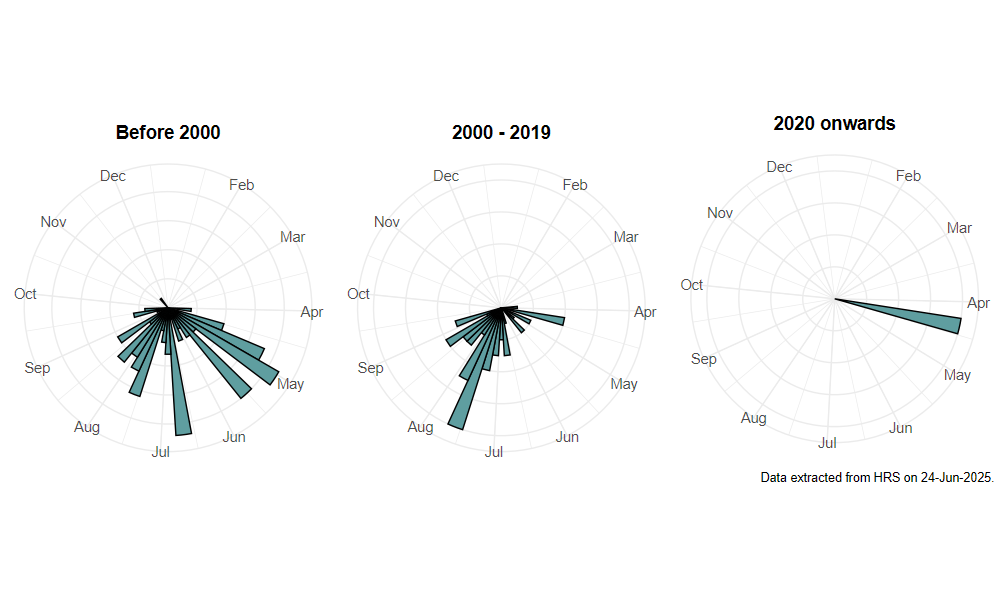Eupeodes nitens (Zetterstedt, 1843)
Identification
Identification difficulty = 4. ![]()
![]() according to Ball & Morris, 20241
according to Ball & Morris, 20241
Synonymy
Syrphus nitens Zetterstedt in Coe(1953)2, Metasyrphus nitens (Zetterstedt) in Stubbs & Falk (1983)3.
Biology
The larva is predaceous upon aphids on shrubs, with reports of associations with aphids on Black Currant Ribes nigrum, Elderberry Sambucus nigra and Spindle Euonymus europaeus.
Flight period
The following plots show the number of unique records per week excluding those reported to be of immature stages.

Status
Lower risk (Nationally scarce) - Ball & Morris, 20144. Notable - Falk, 19915.
Distribution
The majority of records are southern or western and are largely confined to England. Obvious centres of population lie in Dorset, Hampshire and Surrey with a further concentration of records along the Severn valley and the Welsh Marches. The most northerly records are from southern Cumbria and County Durham.

Trends
The following plots show the Frescalo TFactor vs year and a map of the rescaled frequency (all records) for the species.
-
Ball, S., & Morris, R. (2024). Hoverflies of Britain and Ireland. WILDGuides (3rd ed.). Oxford: Princeton University Press. ↩
-
Coe, R. (1953). Diptera: Syrphidae. Handbooks for the Identification of British Insects, 10(1), 1–98. ↩
-
Stubbs, A., & Falk, S. (1983). British Hoverflies: An Illustrated Identification Guide (1st ed.). Reading: BENHS. ↩
-
Ball, S., & Morris, R. (2014). A review of the scarce and threatened flies of Great Britain. Part 6: Syrphidae. ( No. 9). Species status (pp. 1–130). Peterborough: JNCC. ↩
-
Falk, S. (1991). A review of the scarce and threatened flies of Great Britain. ( No. 39). Research and Survey in Nature Conservation (pp. 1–194). Peterborough: NCC. ↩